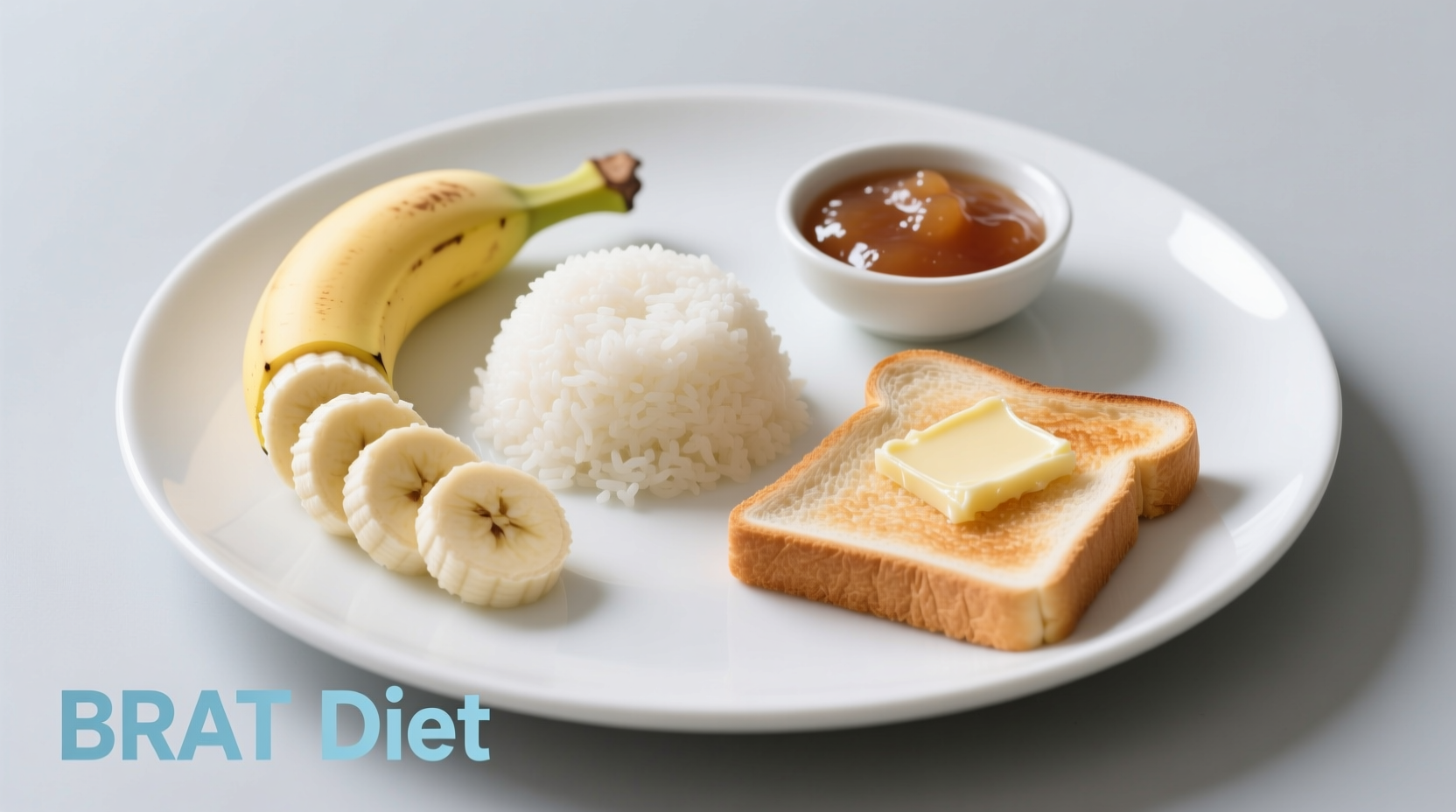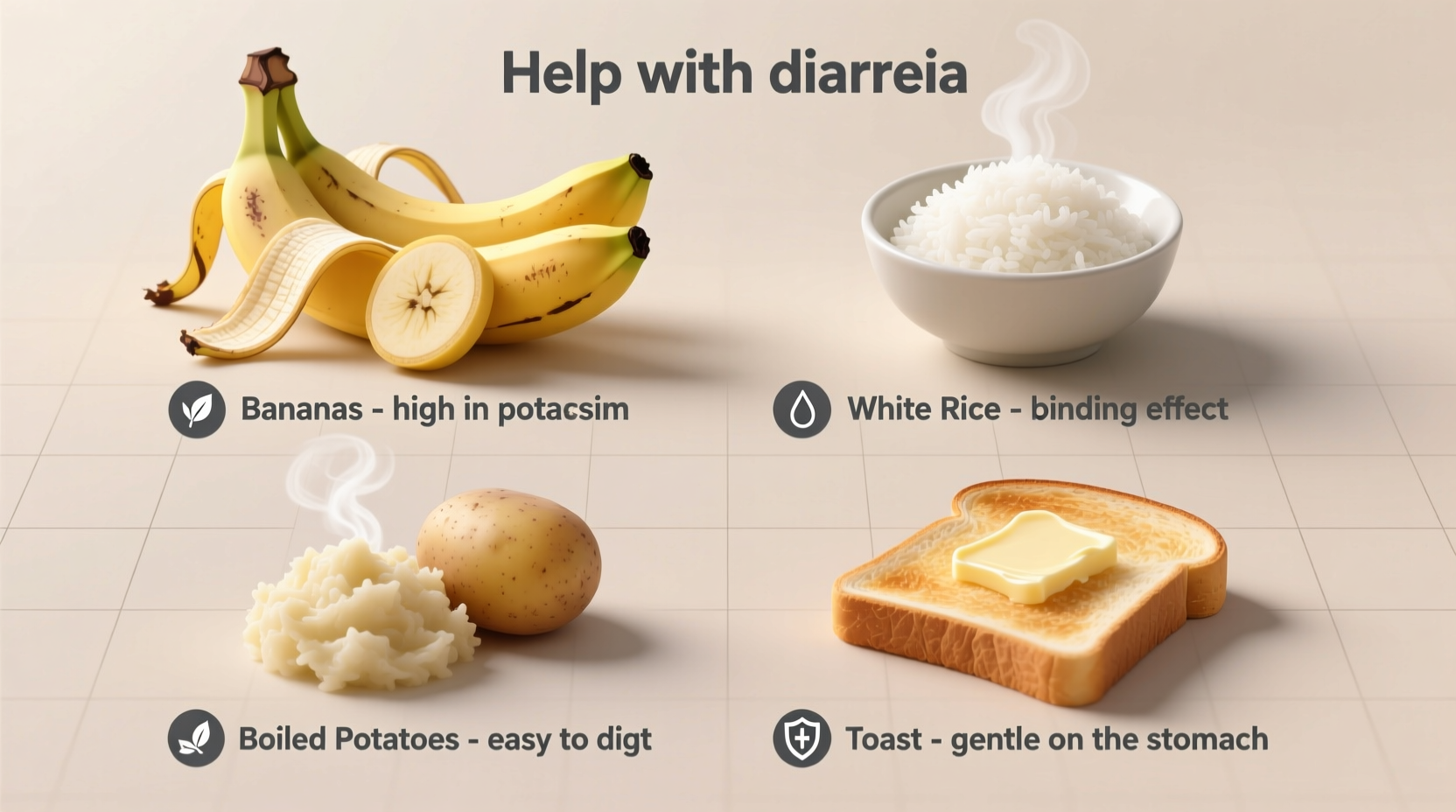Diarrhea strikes unexpectedly, leaving you searching for quick relief. As someone who's navigated countless digestive issues through culinary science, I've seen how strategic food choices can significantly shorten recovery time. The right foods help restore electrolytes, firm stools, and support gut healing—while the wrong ones can prolong your discomfort.
Your Immediate Action Plan: First 24 Hours
When diarrhea hits, your digestive system needs gentle treatment. The first 24 hours are critical for preventing dehydration and beginning recovery. Focus on hydration before solid foods:
- Oral rehydration solutions (ORS) - More effective than water alone, containing the perfect balance of salts and sugars
- Clear broths - Provide sodium and hydration without irritating your gut
- Herbal teas - Ginger or chamomile tea can soothe intestinal spasms
Start introducing bland foods only when you can keep liquids down for several hours. The National Institute of Diabetes and Digestive and Kidney Diseases (NIDDK) recommends beginning with small portions of easily digestible carbohydrates to help bind stools.

Diarrhea Recovery Timeline: What to Eat When
Recovery follows a predictable pattern when managed properly. Here's what to expect and eat at each stage:
| Timeframe | Symptoms | Recommended Foods | Foods to Avoid |
|---|---|---|---|
| First 12-24 hours | Frequent watery stools, possible cramping | ORS, clear broths, weak tea | All solid foods, dairy, caffeine |
| Days 1-2 | Stools becoming less frequent | BRAT foods, boiled potatoes, plain crackers | Raw fruits/vegetables, fatty foods |
| Days 3-4 | Forming stools, reduced frequency | Lean proteins, cooked vegetables, probiotic yogurt | Spicy foods, high-fiber items |
| Day 5+ | Near-normal digestion | Gradual return to regular diet | Problem foods that triggered episode |
This timeline reflects current medical understanding documented by the Mayo Clinic, which has evolved from the traditional BRAT-only approach to a more nutritionally complete recovery plan.
Top 5 Foods That Help Stop Diarrhea
1. Bananas: Nature's Potassium Powerhouse
Ripe bananas contain pectin, a soluble fiber that absorbs excess fluid in the intestines. They also replenish potassium lost during diarrhea. The World Health Organization includes bananas in their recommended rehydration protocol for children with diarrhea in developing countries.
2. White Rice: The Gentle Binder
Unlike brown rice, white rice has had the fiber-rich bran removed, making it easier to digest. Its starchy nature helps firm stools without irritating sensitive intestines. A study published in the Journal of Pediatric Gastroenterology and Nutrition found rice-based oral rehydration solutions reduced stool output by 30% compared to standard solutions.
3. Applesauce: Pectin in Action
Cooked apples contain concentrated pectin that helps absorb excess water in the bowels. The cooking process breaks down fiber that might otherwise aggravate diarrhea. Choose unsweetened varieties to avoid added sugars that could worsen symptoms.
4. Toast: Simple Carbohydrate Relief
Plain white toast provides easily digestible carbohydrates without irritating fats or fibers. The toasting process creates a slightly astringent quality that helps firm stools. Avoid butter or spreads during the initial recovery phase.
5. Probiotic Yogurt: Restoring Gut Balance
Yogurt with live active cultures helps replenish beneficial bacteria depleted during diarrhea. The CDC notes that certain probiotic strains can reduce the duration of infectious diarrhea by one full day. Choose plain yogurt without added sugars or artificial sweeteners, which can worsen symptoms.
What Not to Eat: Critical Avoidances
Certain foods can significantly prolong diarrhea or worsen symptoms. The American College of Gastroenterology specifically warns against:
- Dairy products (except probiotic yogurt) - Lactose intolerance often develops temporarily during diarrhea
- High-fiber foods - Whole grains, raw vegetables, and beans increase bowel activity
- Fatty or fried foods - Difficult to digest and can stimulate bowel contractions
- Artificial sweeteners - Sorbitol and mannitol have laxative effects
- Caffeine and alcohol - Both dehydrate and stimulate the digestive tract
When Dietary Management Isn't Enough
While most diarrhea cases resolve with proper diet within 48 hours, certain symptoms require medical attention. The Centers for Disease Control and Prevention recommends seeking medical care if you experience:
- Diarrhea lasting more than 2 days
- Signs of dehydration (dark urine, dizziness, extreme thirst)
- Fever above 102°F (39°C)
- Stool containing blood or pus
- Sudden severe abdominal pain
For children and elderly individuals, consult a healthcare provider sooner as dehydration can develop rapidly. The American Academy of Pediatrics emphasizes that infants with diarrhea need special attention to prevent dangerous fluid loss.
Modern Approach vs. Traditional BRAT Diet
The BRAT diet (bananas, rice, applesauce, toast) was once the gold standard for diarrhea management. However, medical understanding has evolved:
| Traditional BRAT Approach | Current Medical Recommendations |
|---|---|
| Exclusive BRAT diet for several days | BRAT foods as starting point, with gradual reintroduction of proteins and vegetables |
| Severe restriction of dairy | Probiotic yogurt encouraged early in recovery |
| Limited nutritional variety | Nutritionally complete recovery plan to prevent malnutrition |
| Longer recovery time (3-5 days) | Shorter recovery with balanced approach (1-3 days) |
This evolution reflects research showing that overly restrictive diets can delay full recovery by depriving the body of essential nutrients needed for healing. The current approach balances gut rest with nutritional support.
Hydration: The Critical Component
While food choices matter, proper hydration is the most critical factor in diarrhea recovery. The World Health Organization recommends oral rehydration solutions containing specific ratios of salt, sugar, and water. You can make an effective solution at home:
- 6 level teaspoons sugar
- ½ level teaspoon salt
- Mixed in 1 liter of clean water
Sip small amounts frequently rather than drinking large quantities at once. For every loose stool, aim to replace with 100-200ml of fluid. Sports drinks can help but often contain too much sugar, which may worsen symptoms.











 浙公网安备
33010002000092号
浙公网安备
33010002000092号 浙B2-20120091-4
浙B2-20120091-4